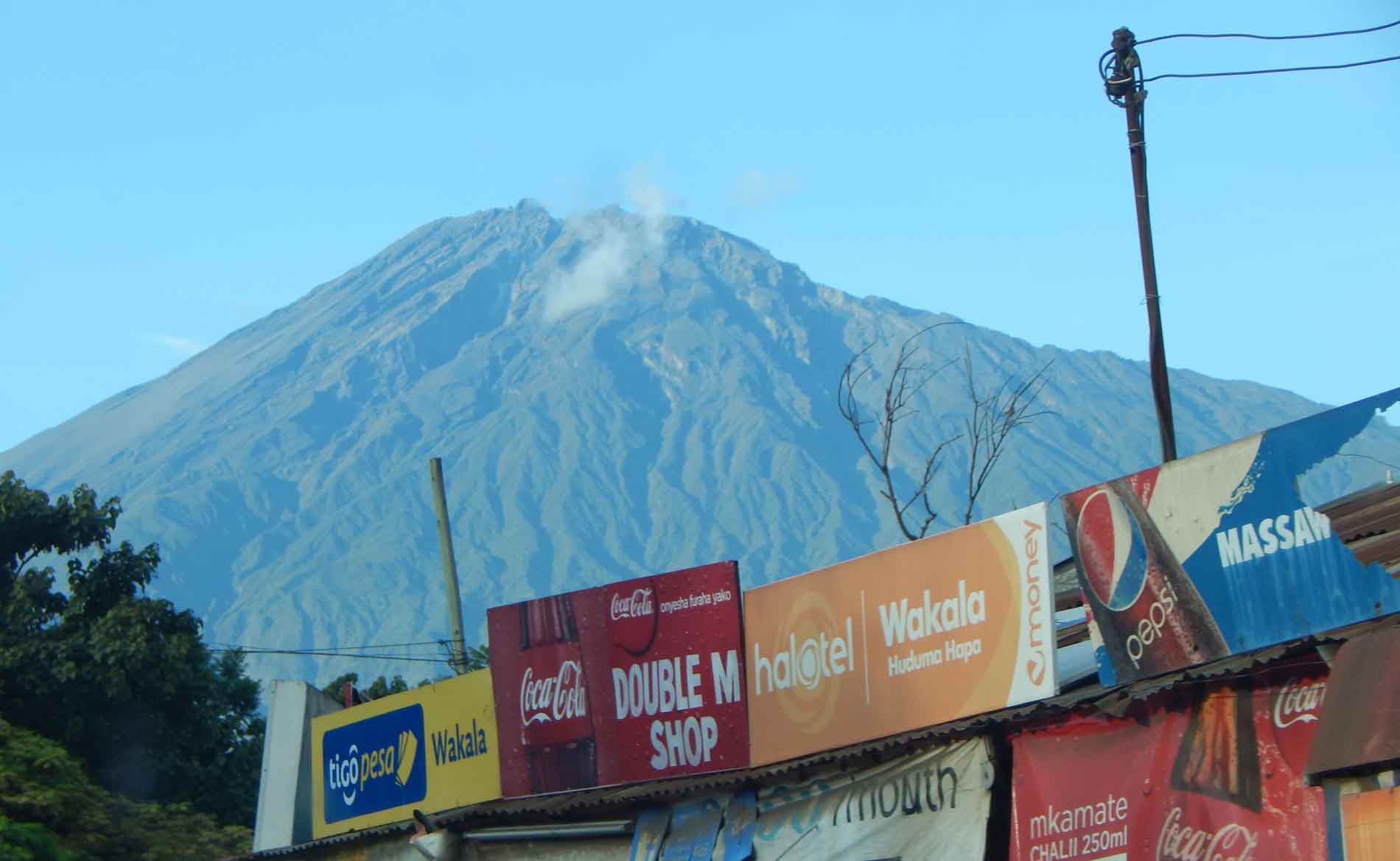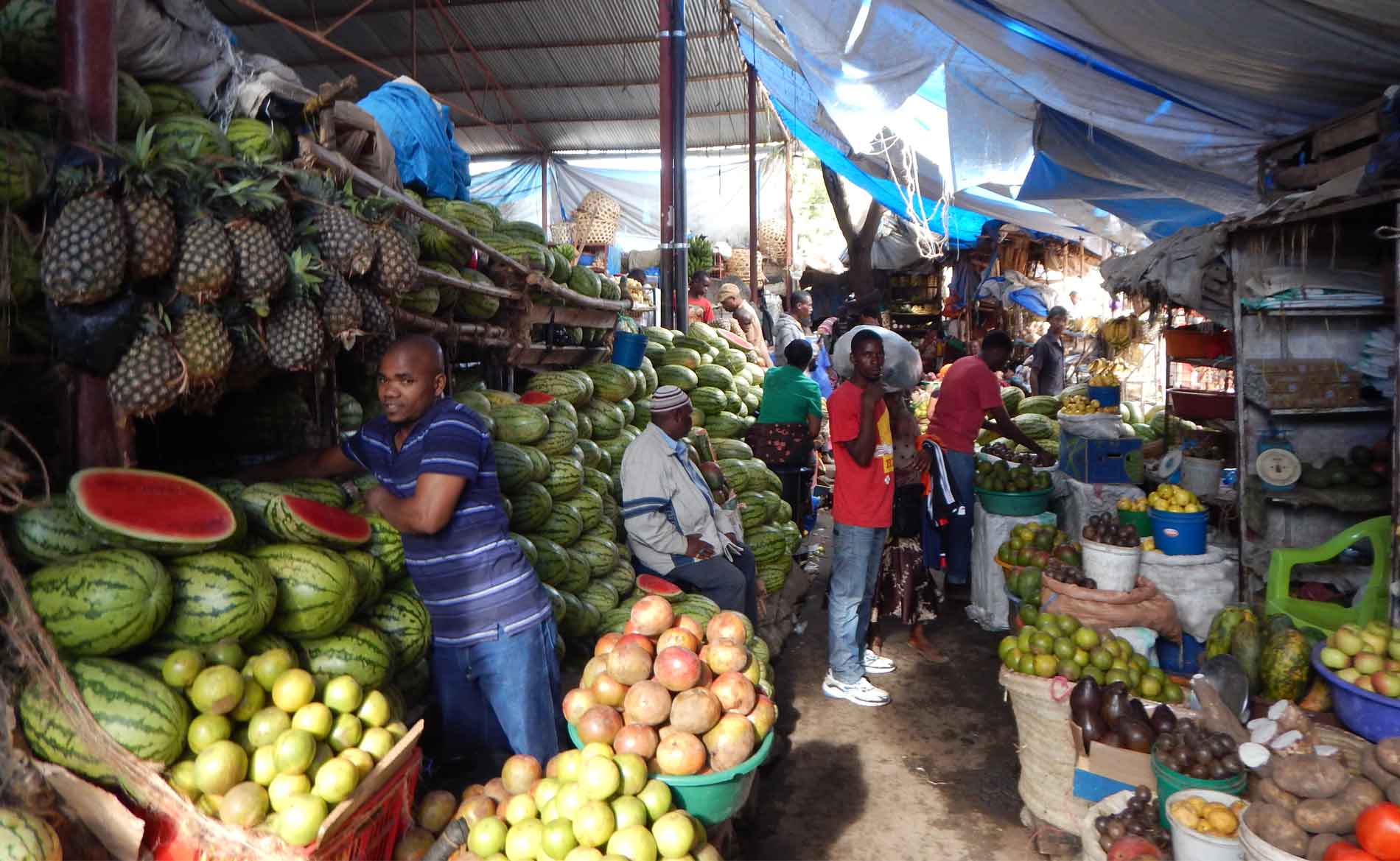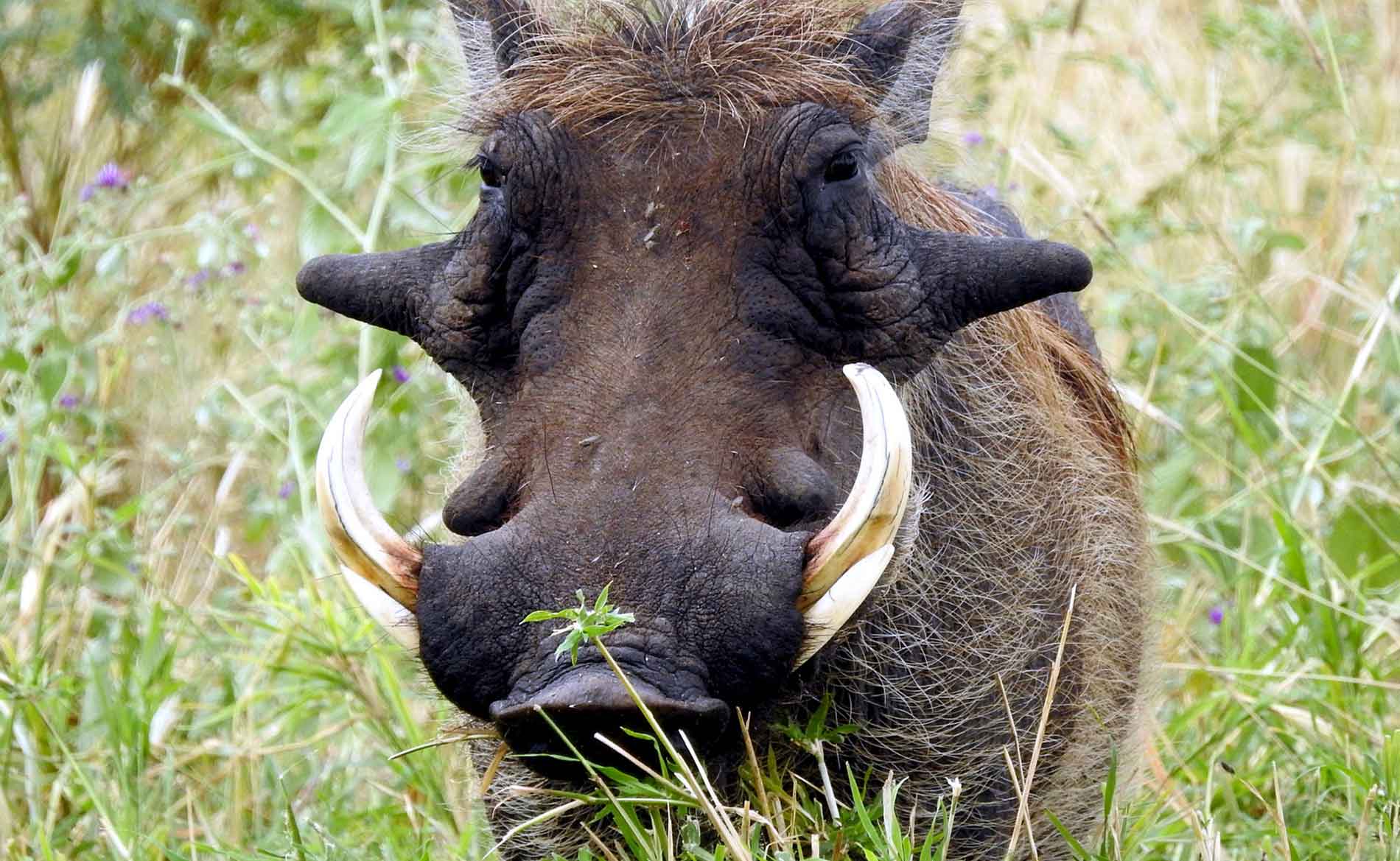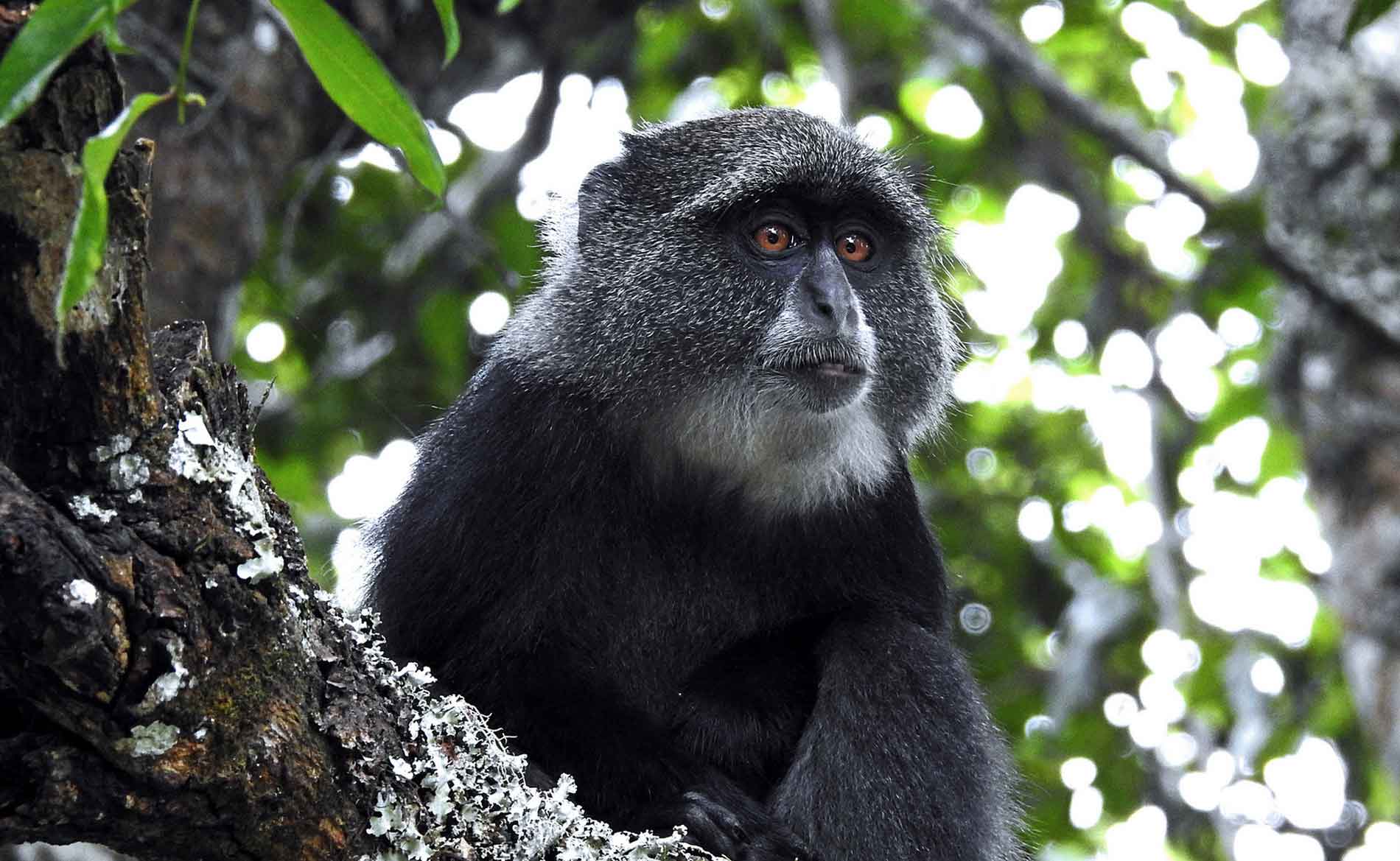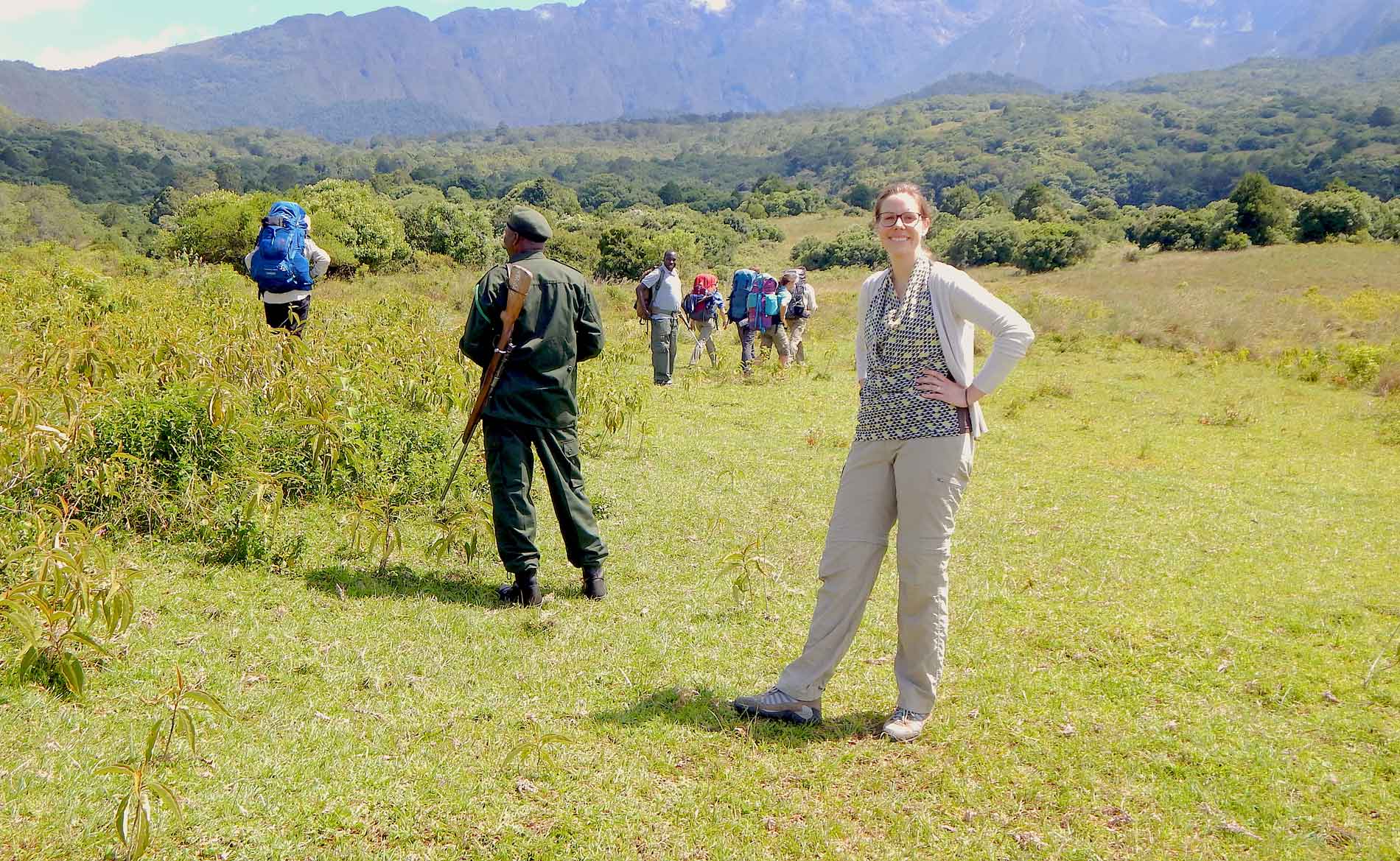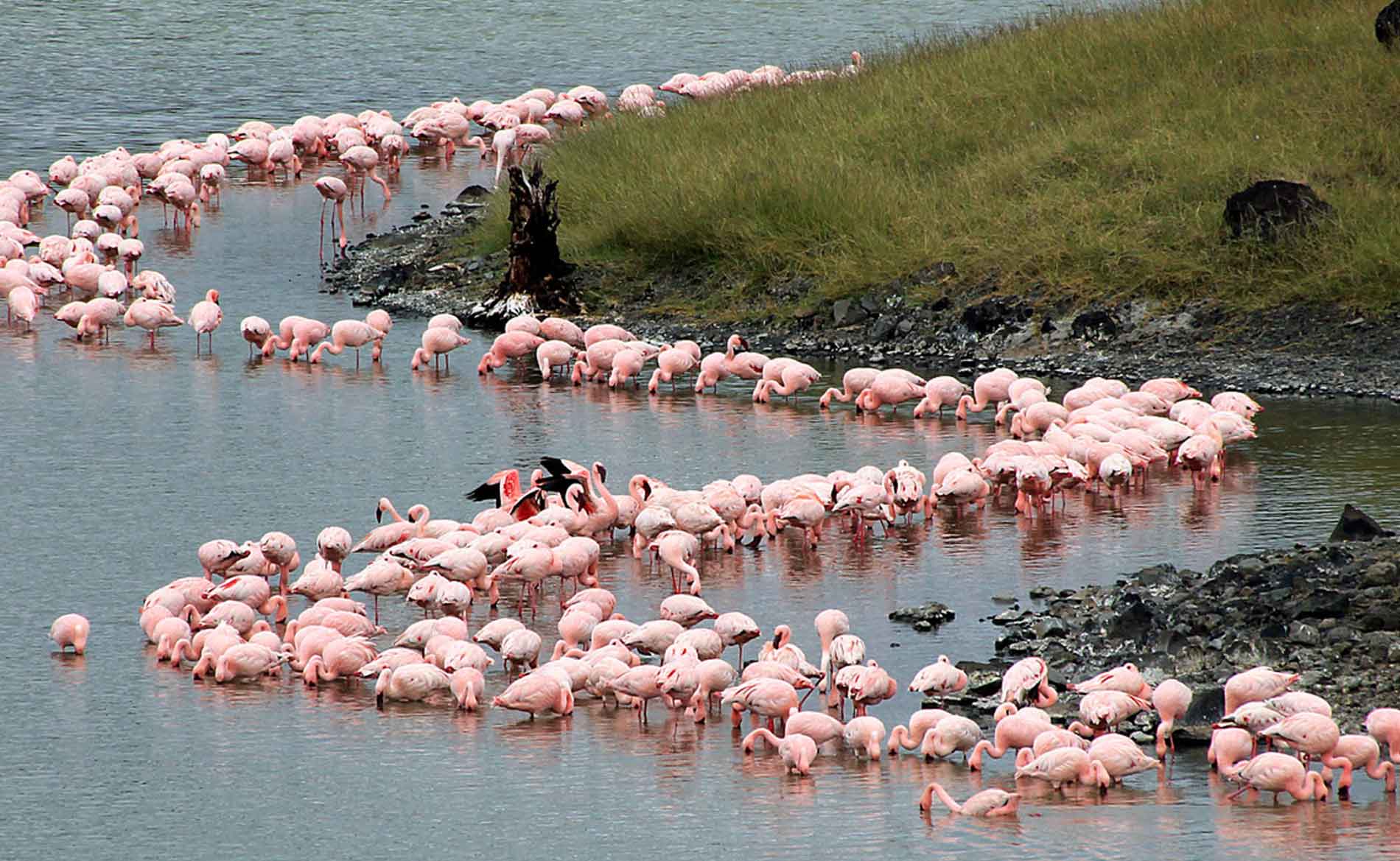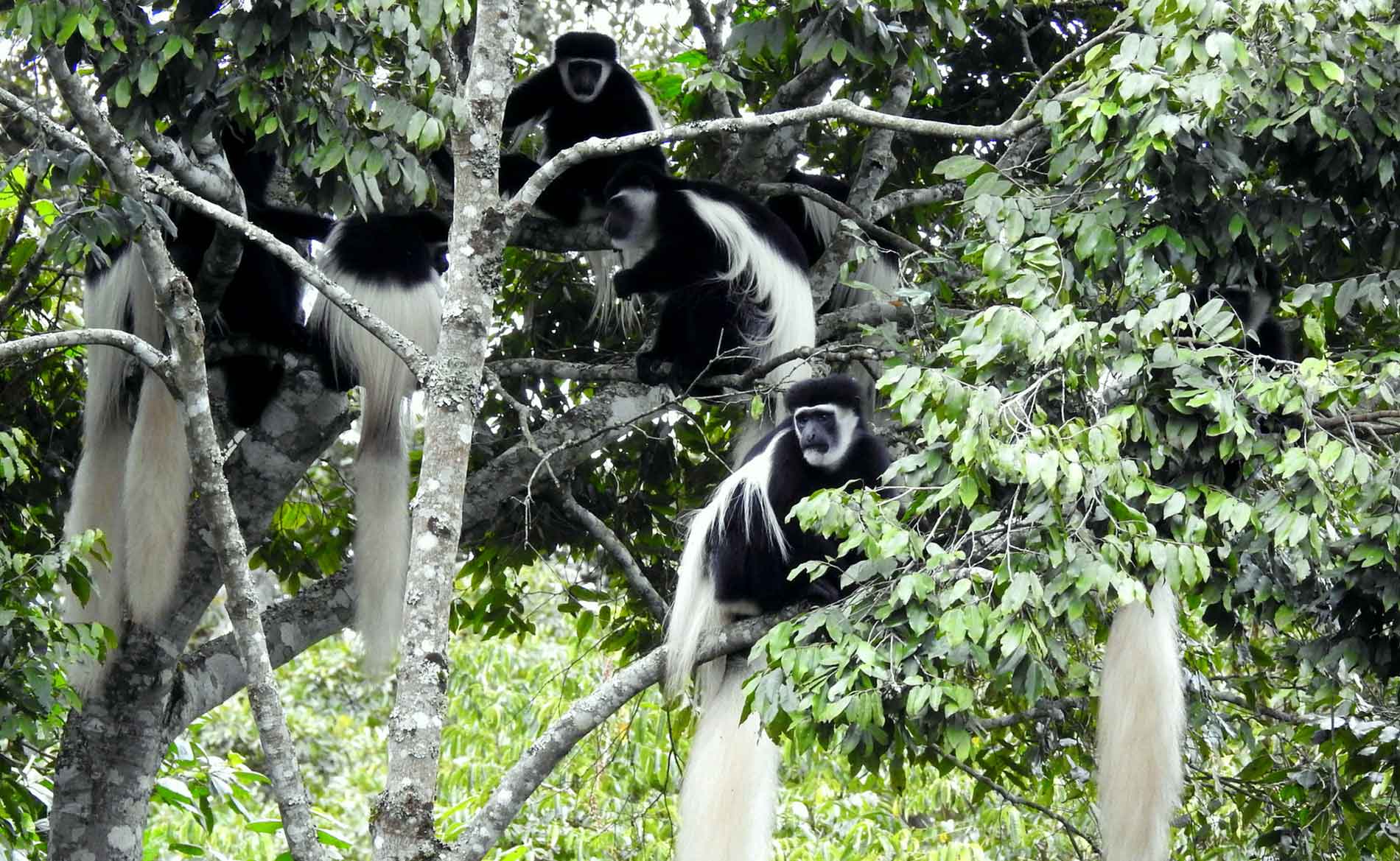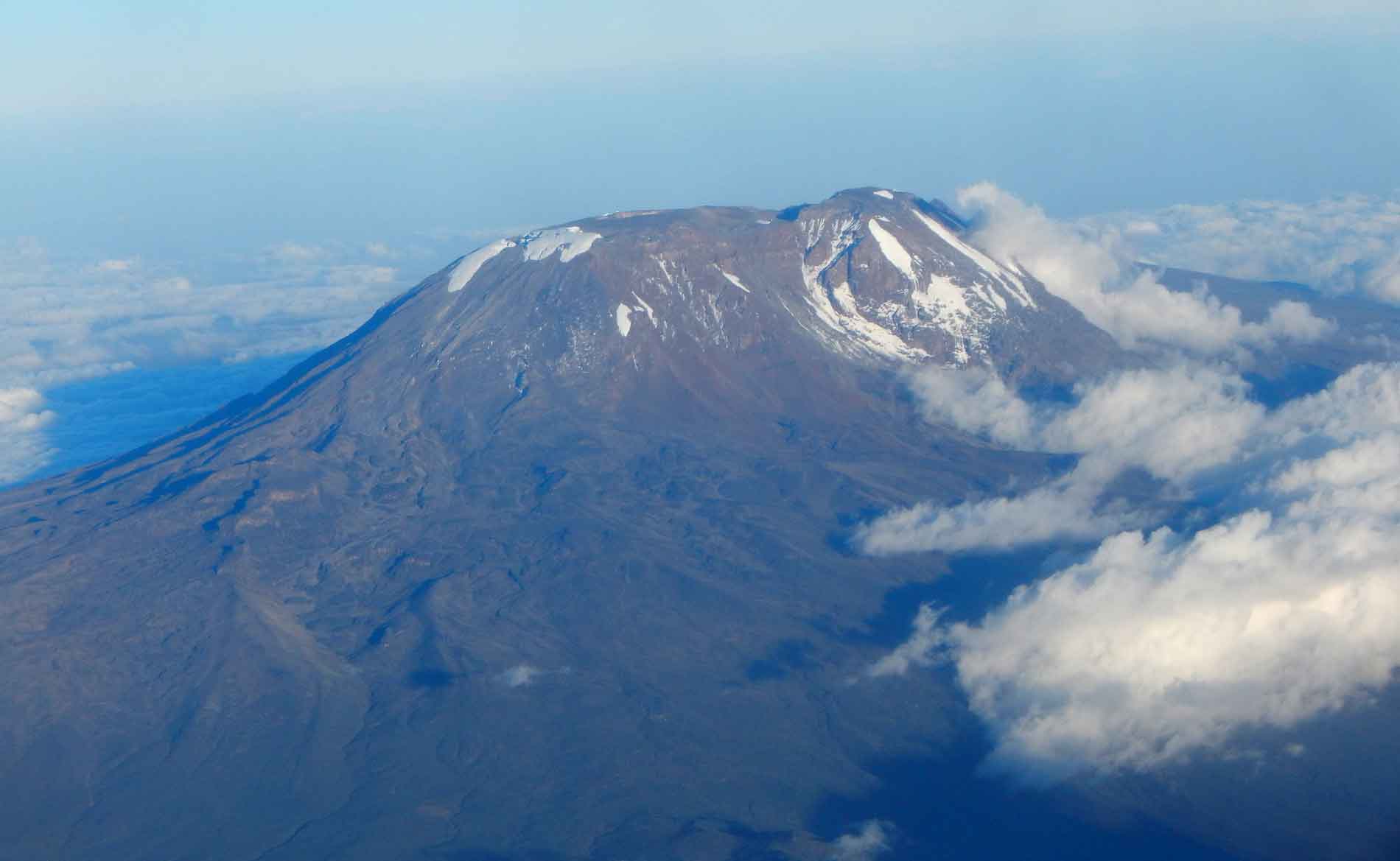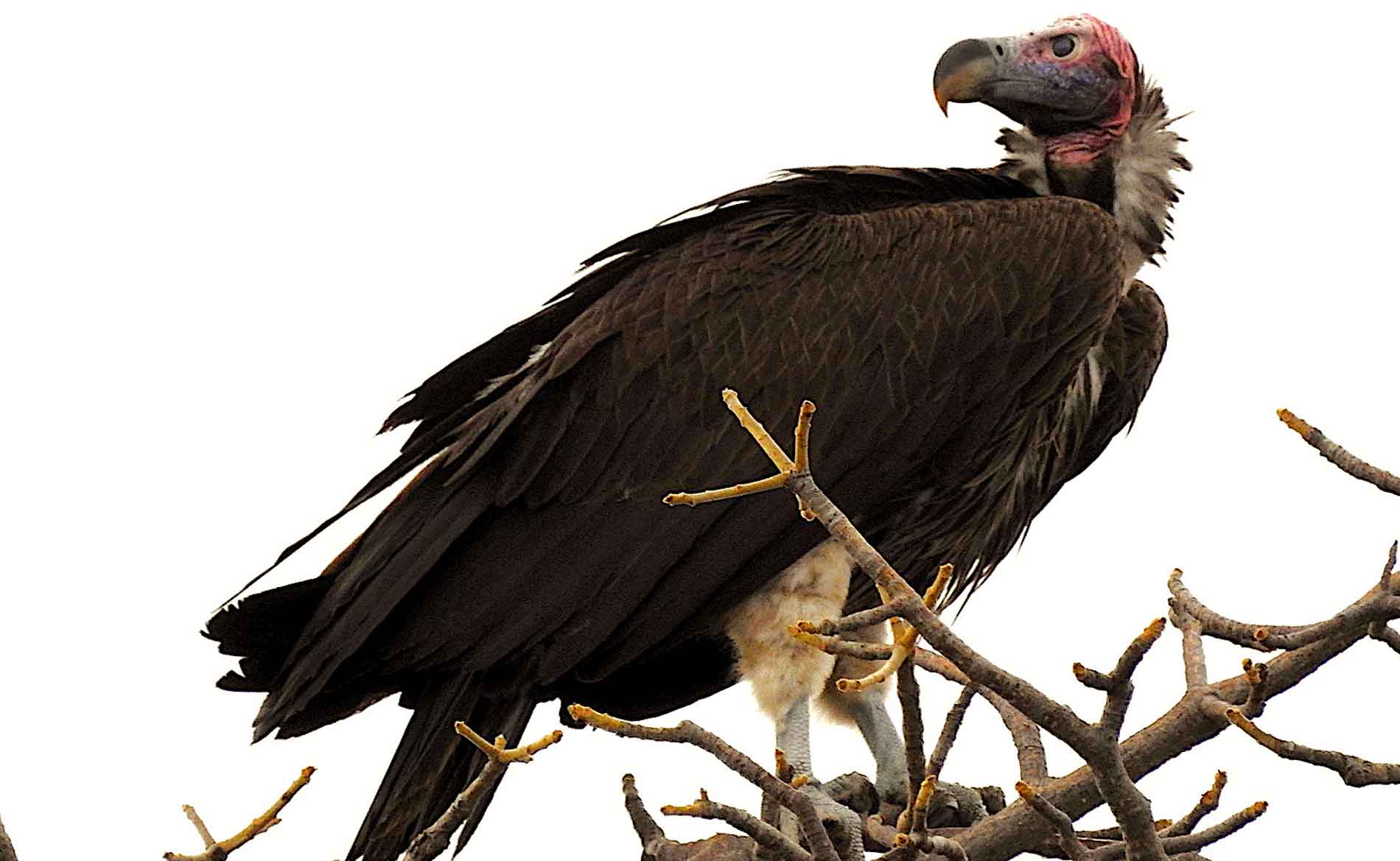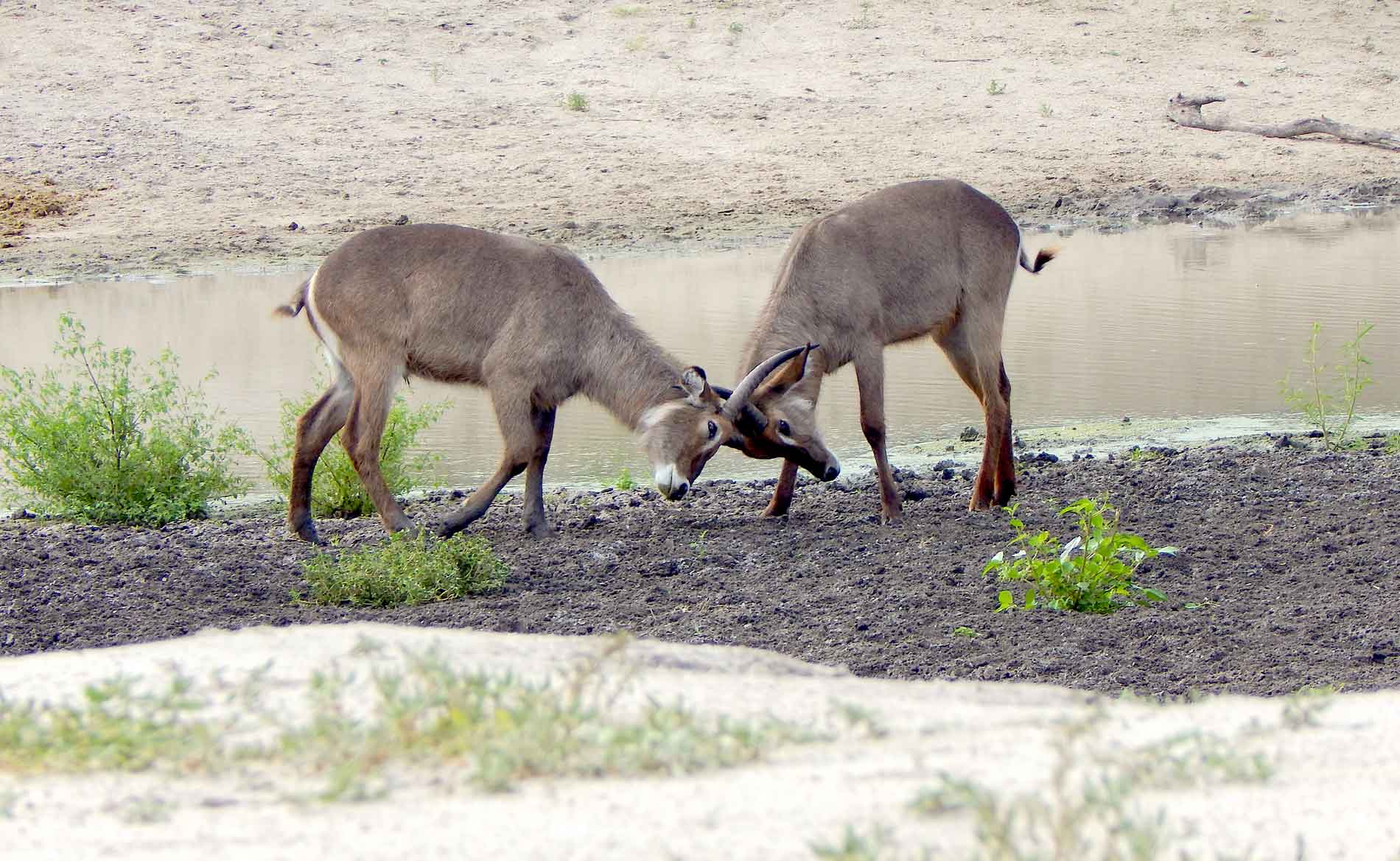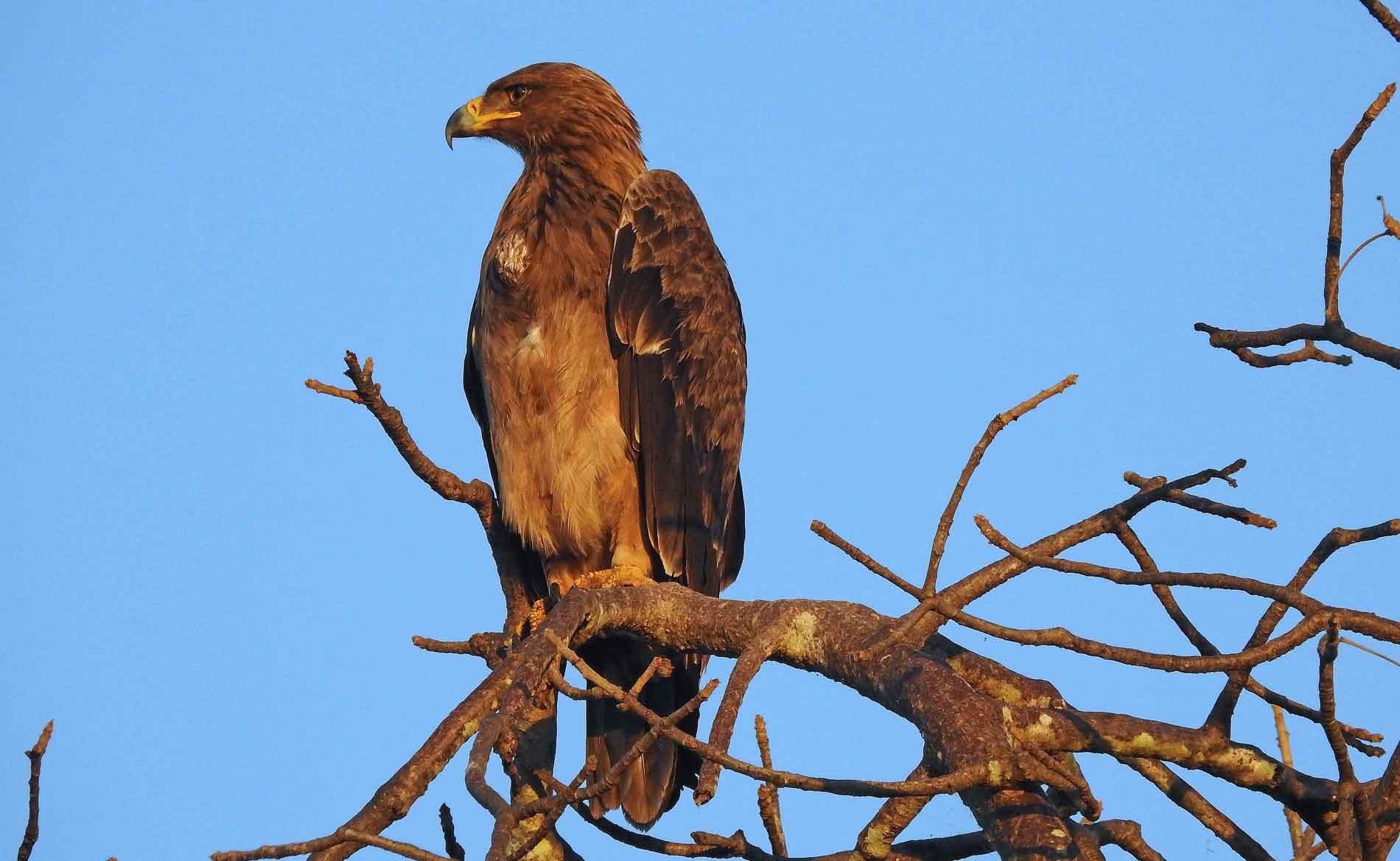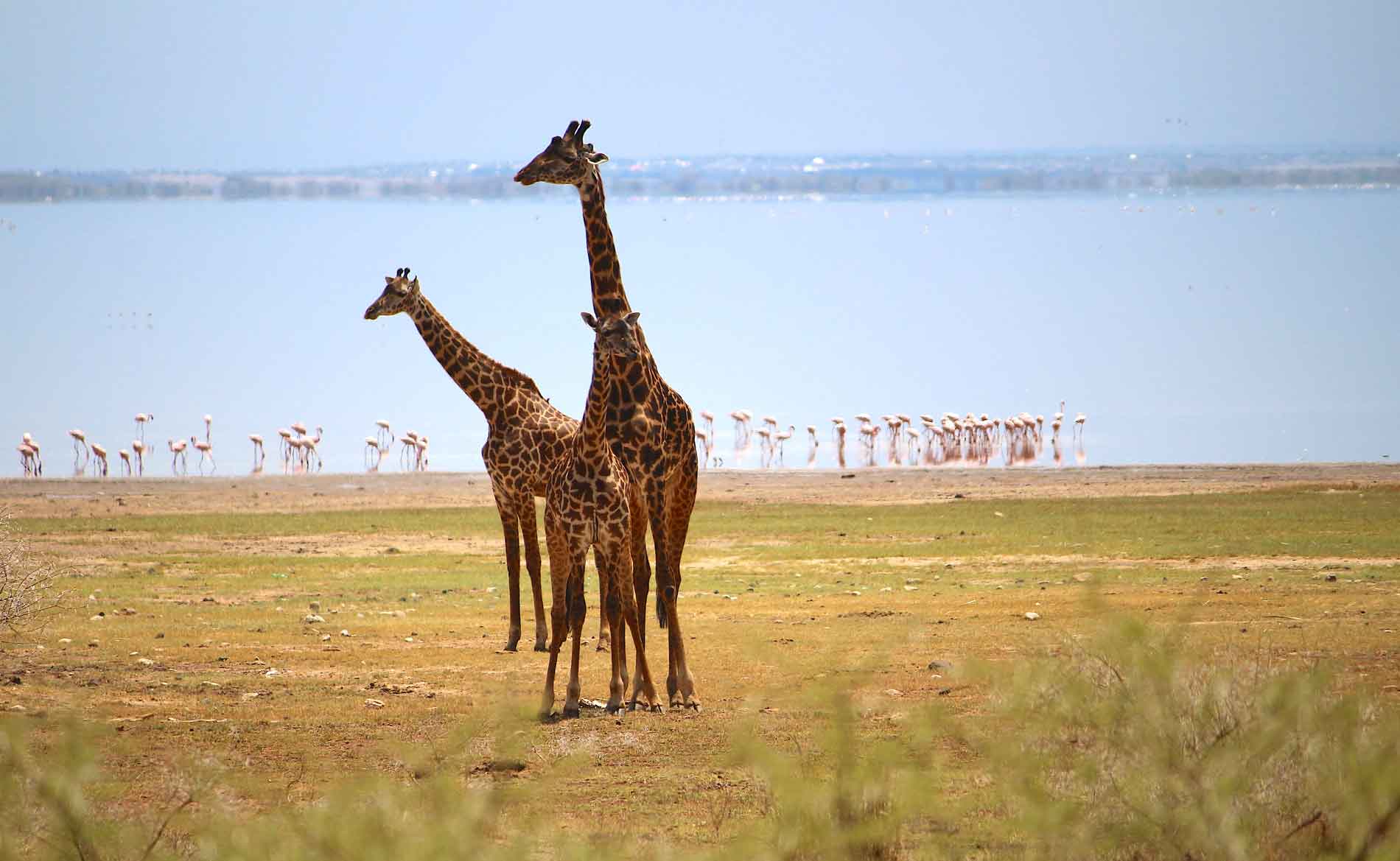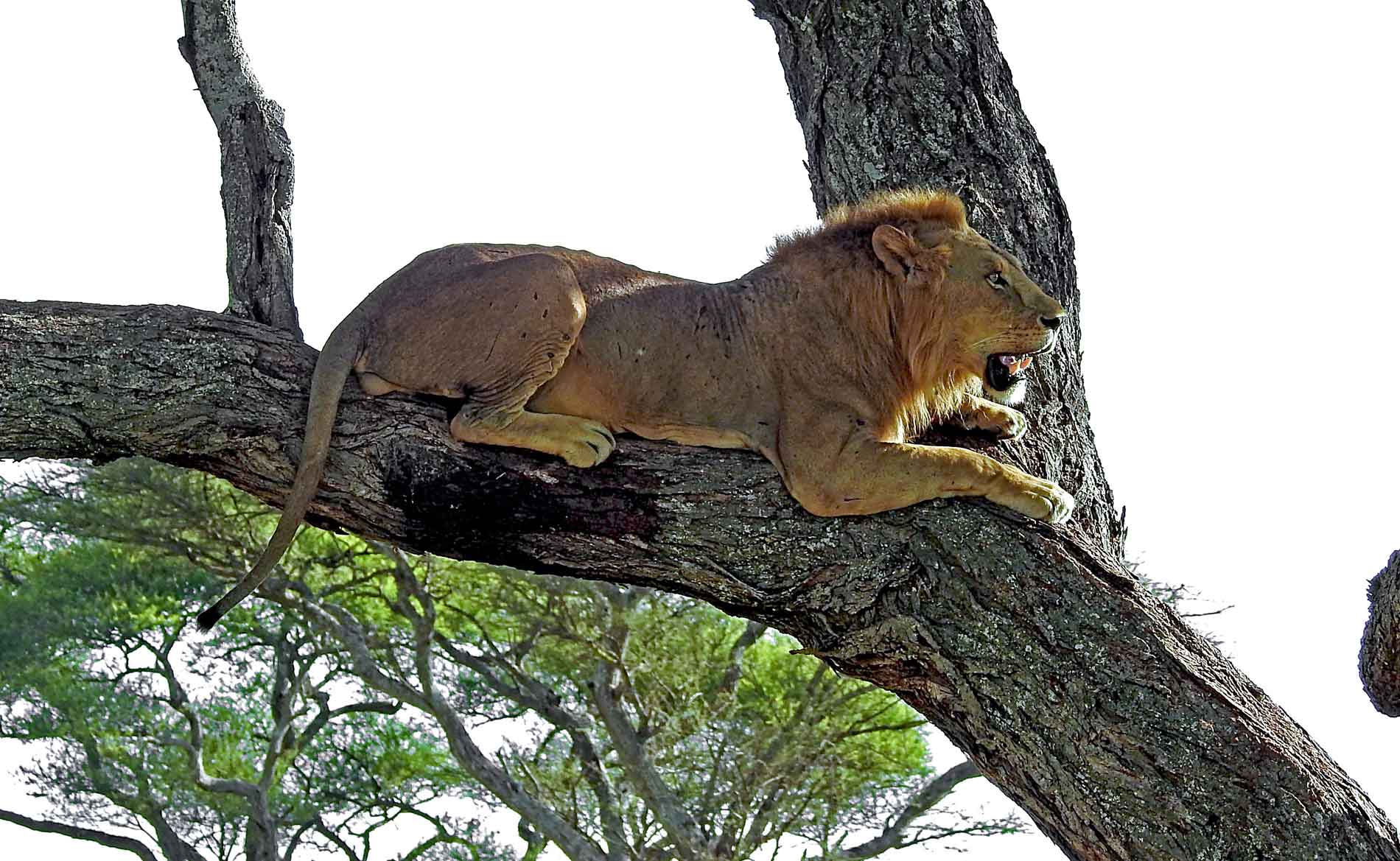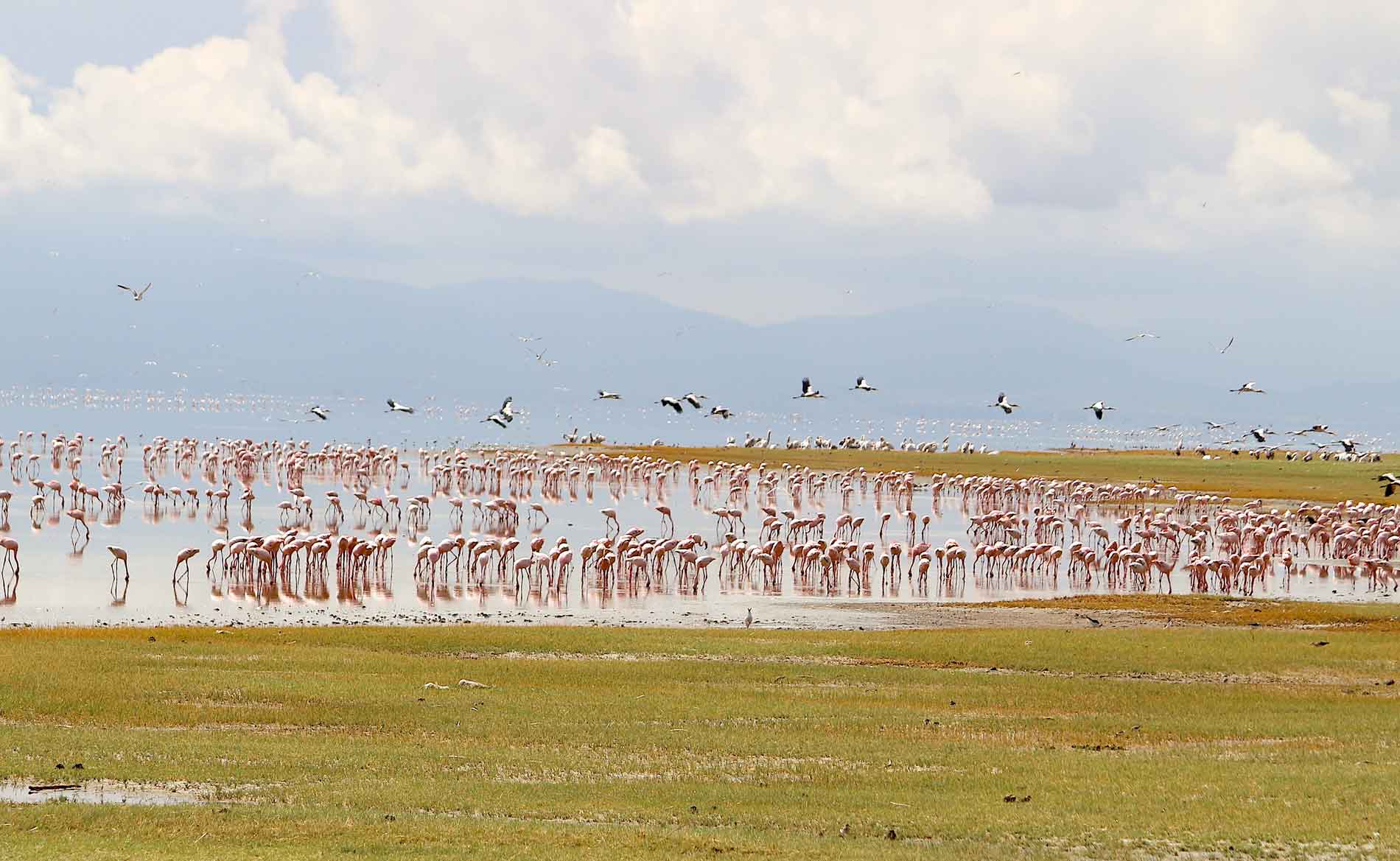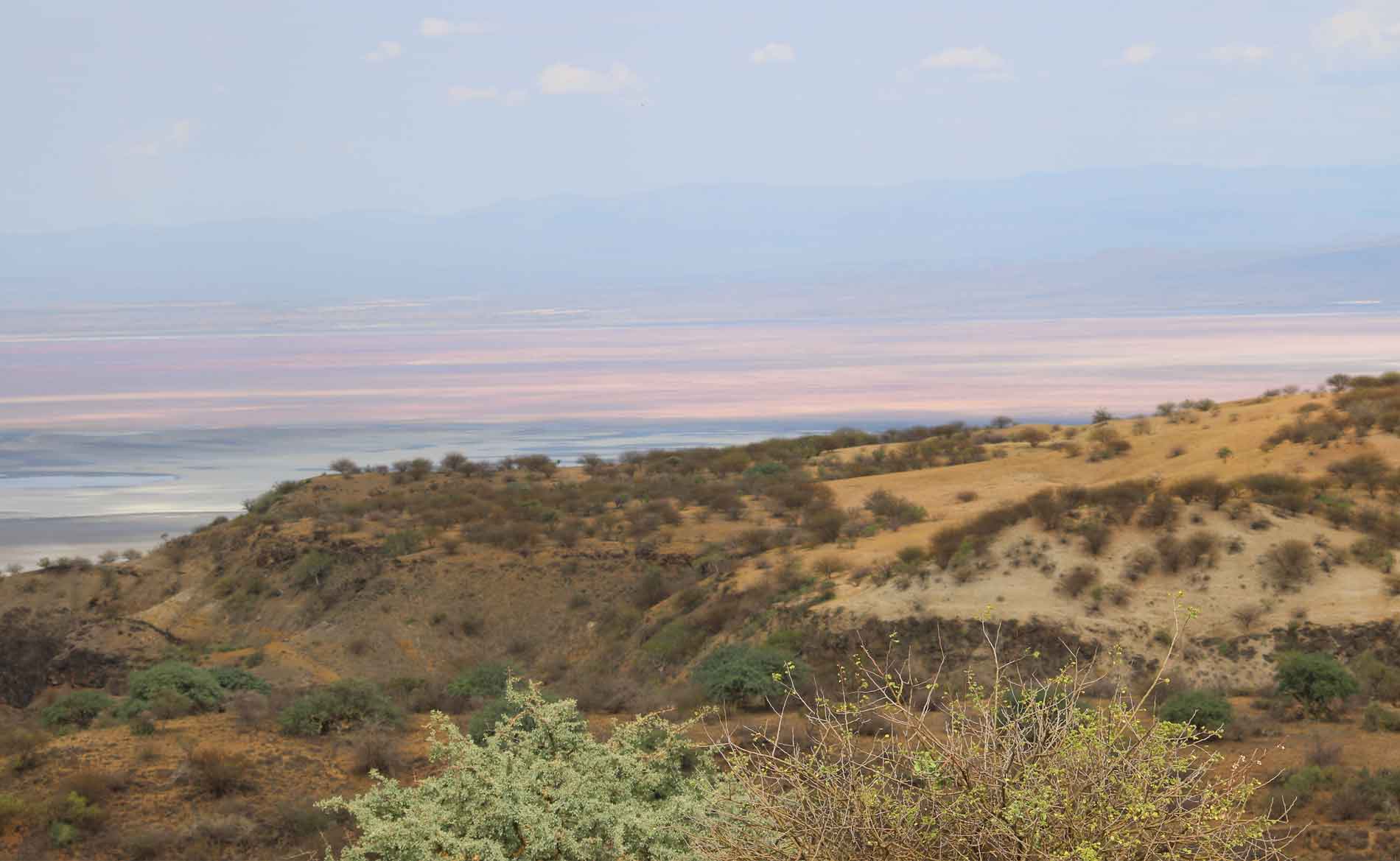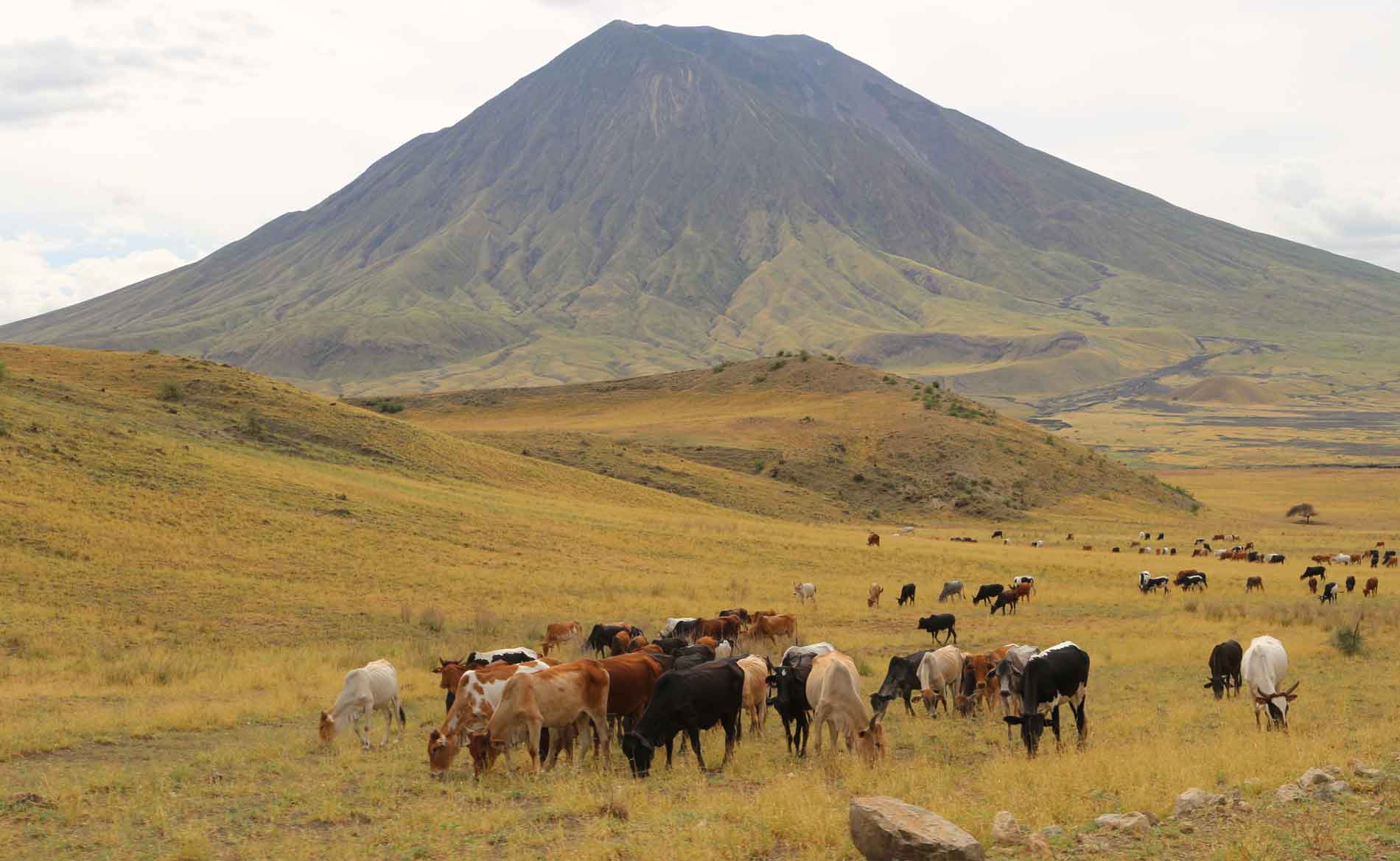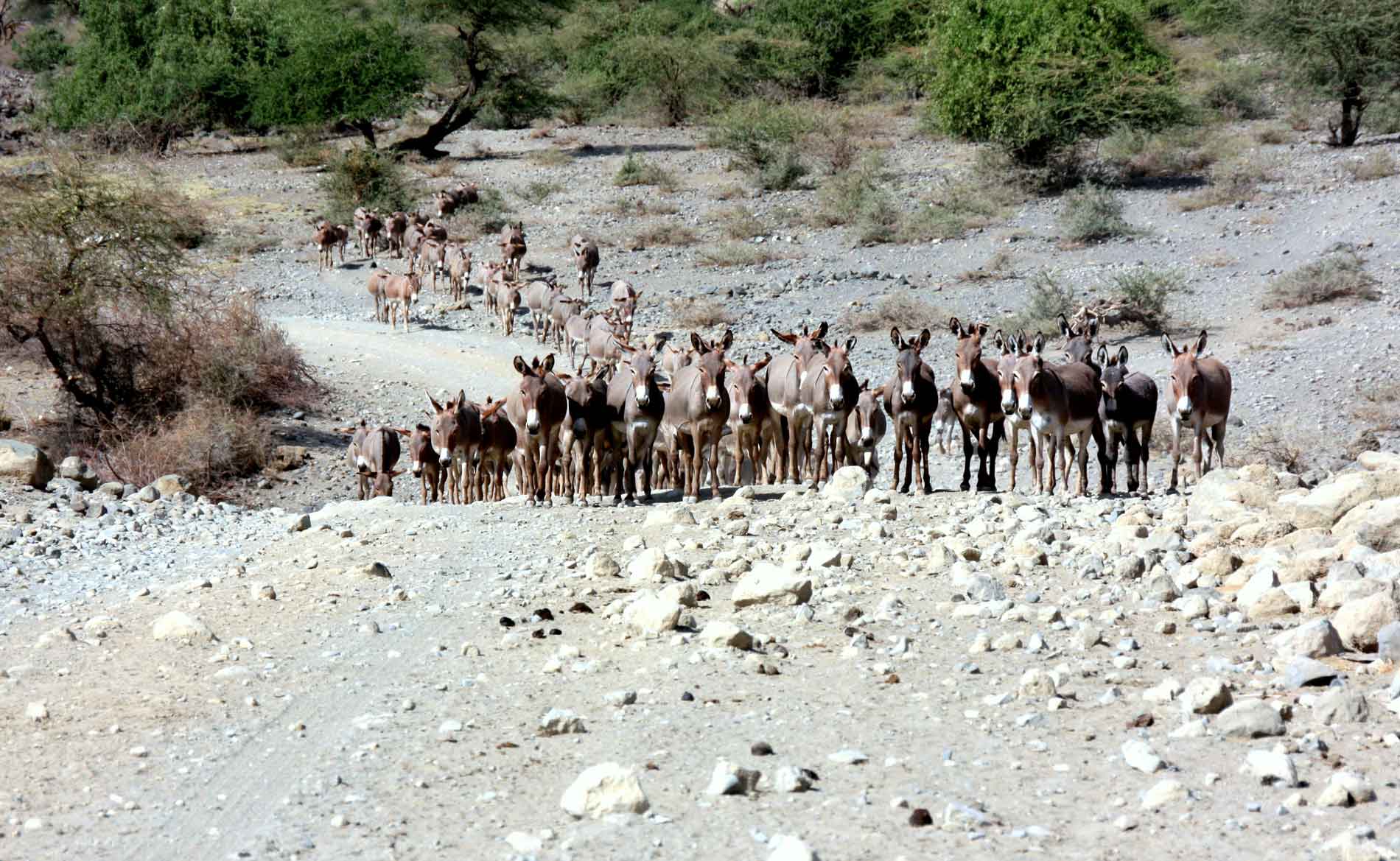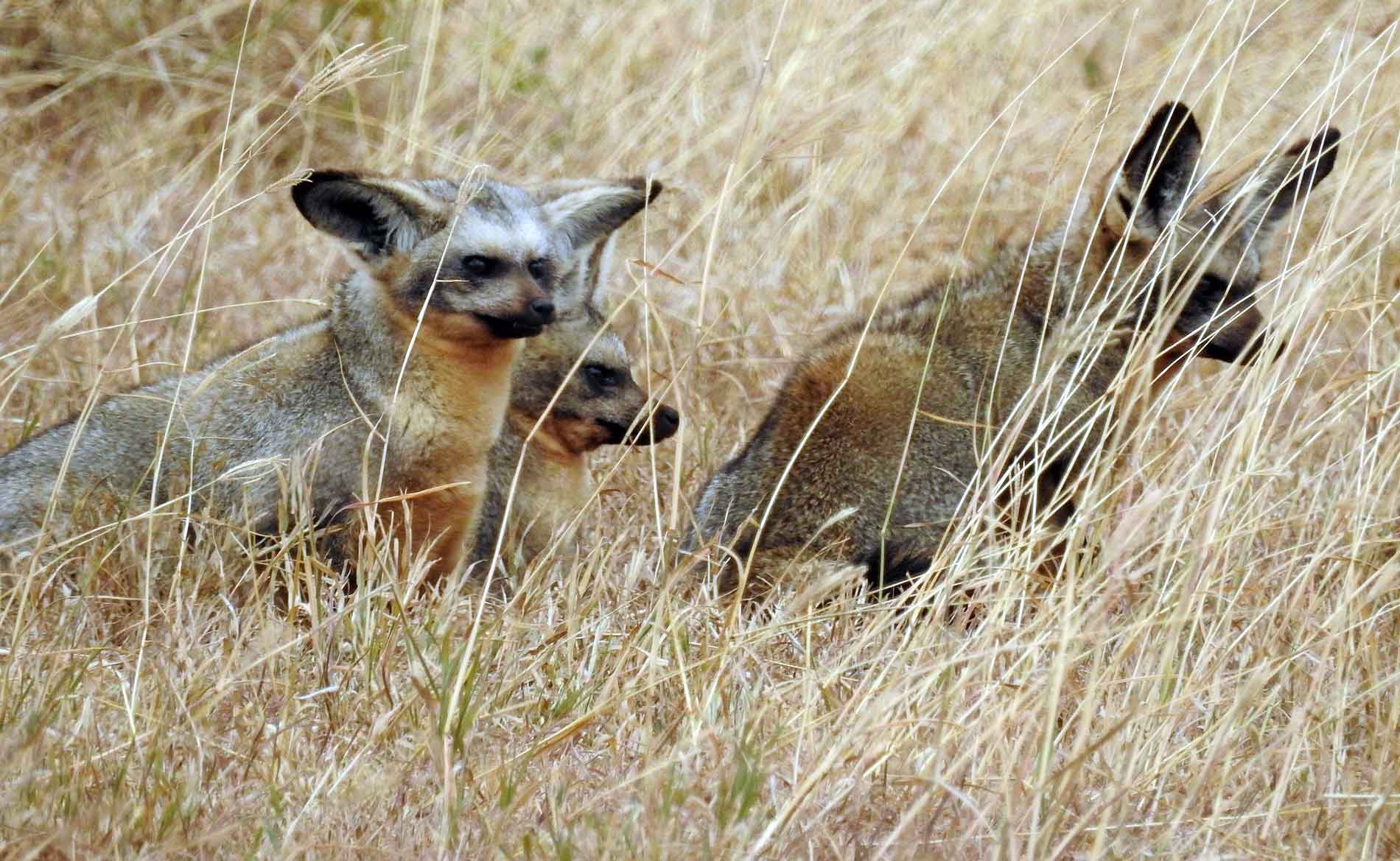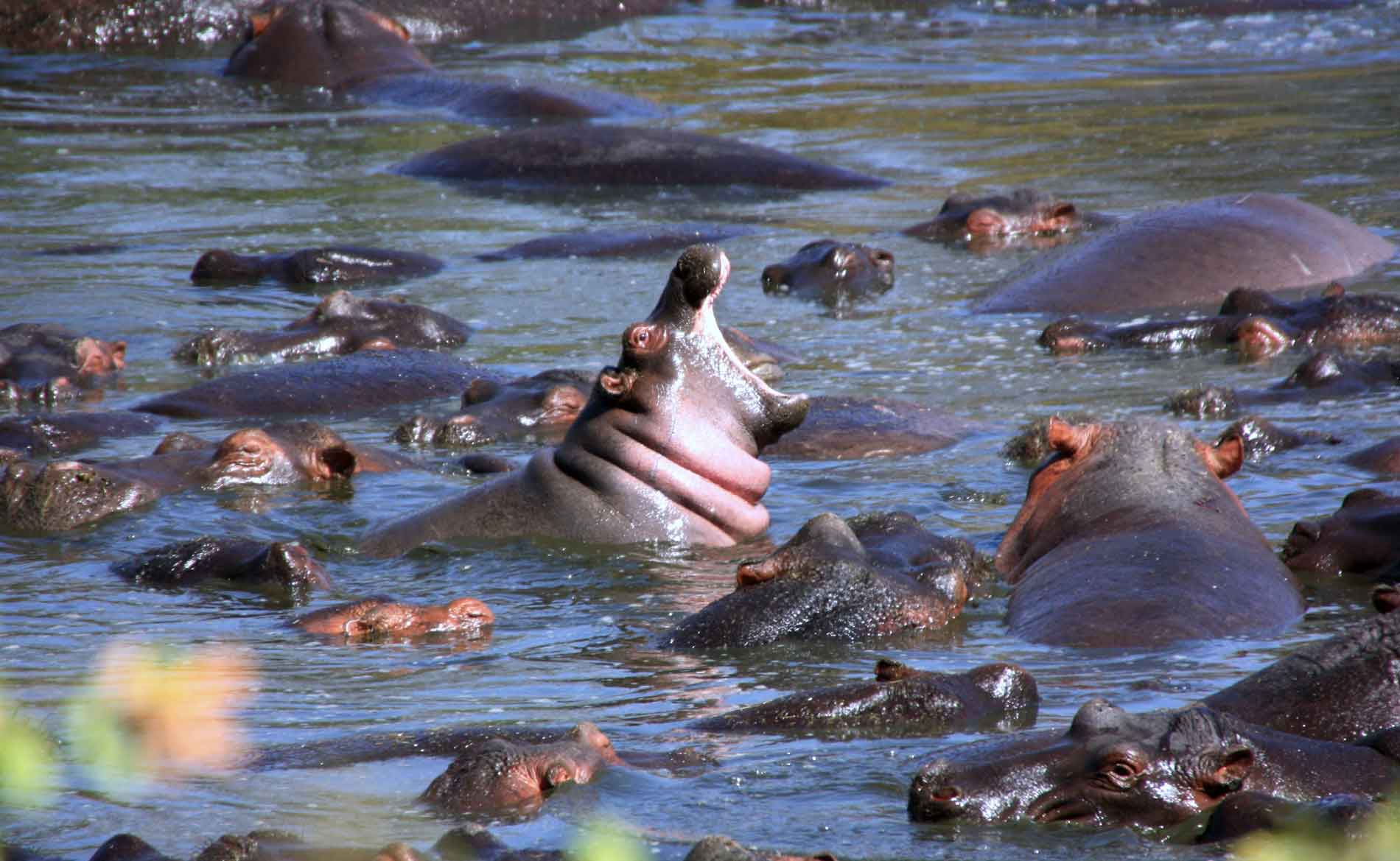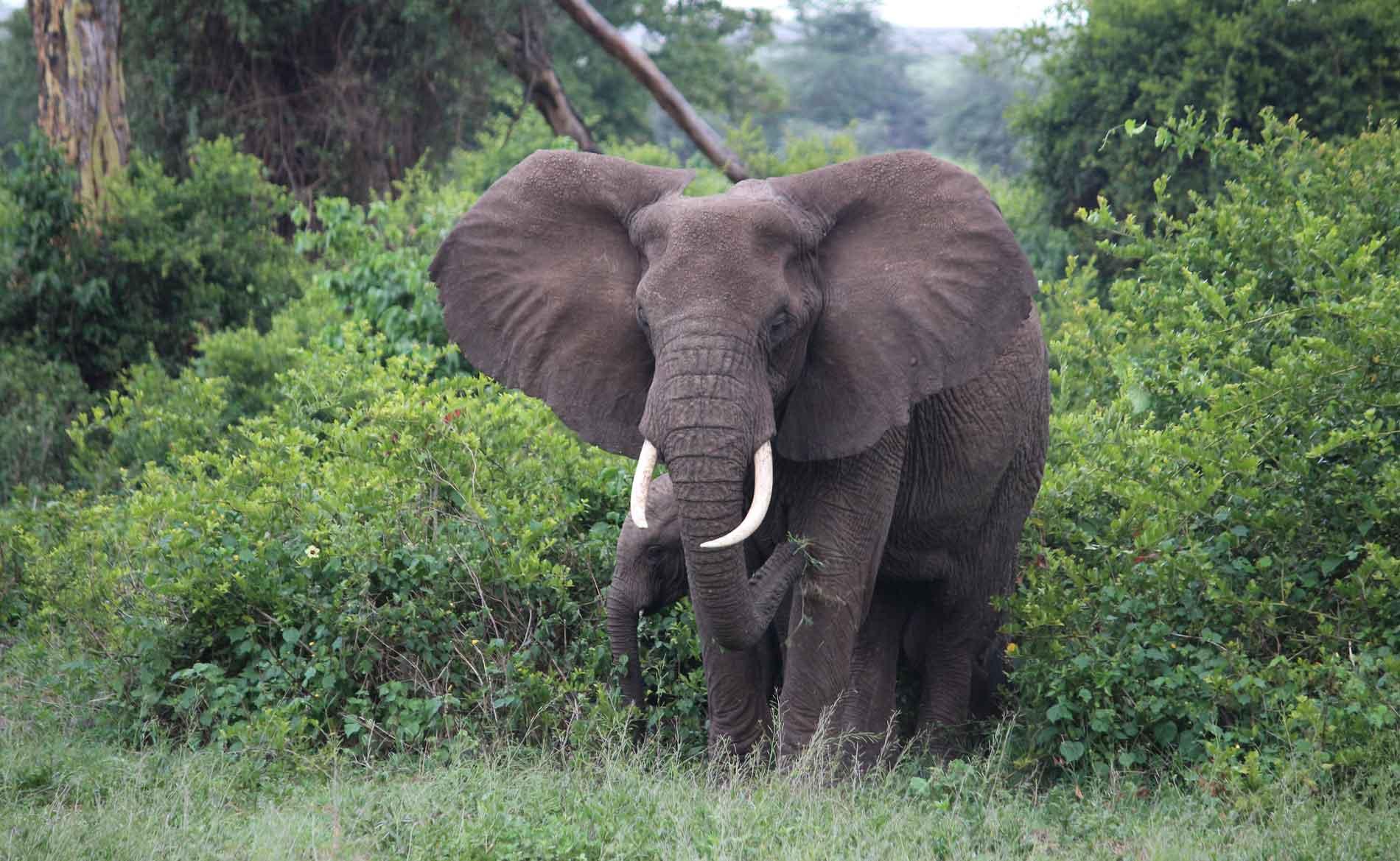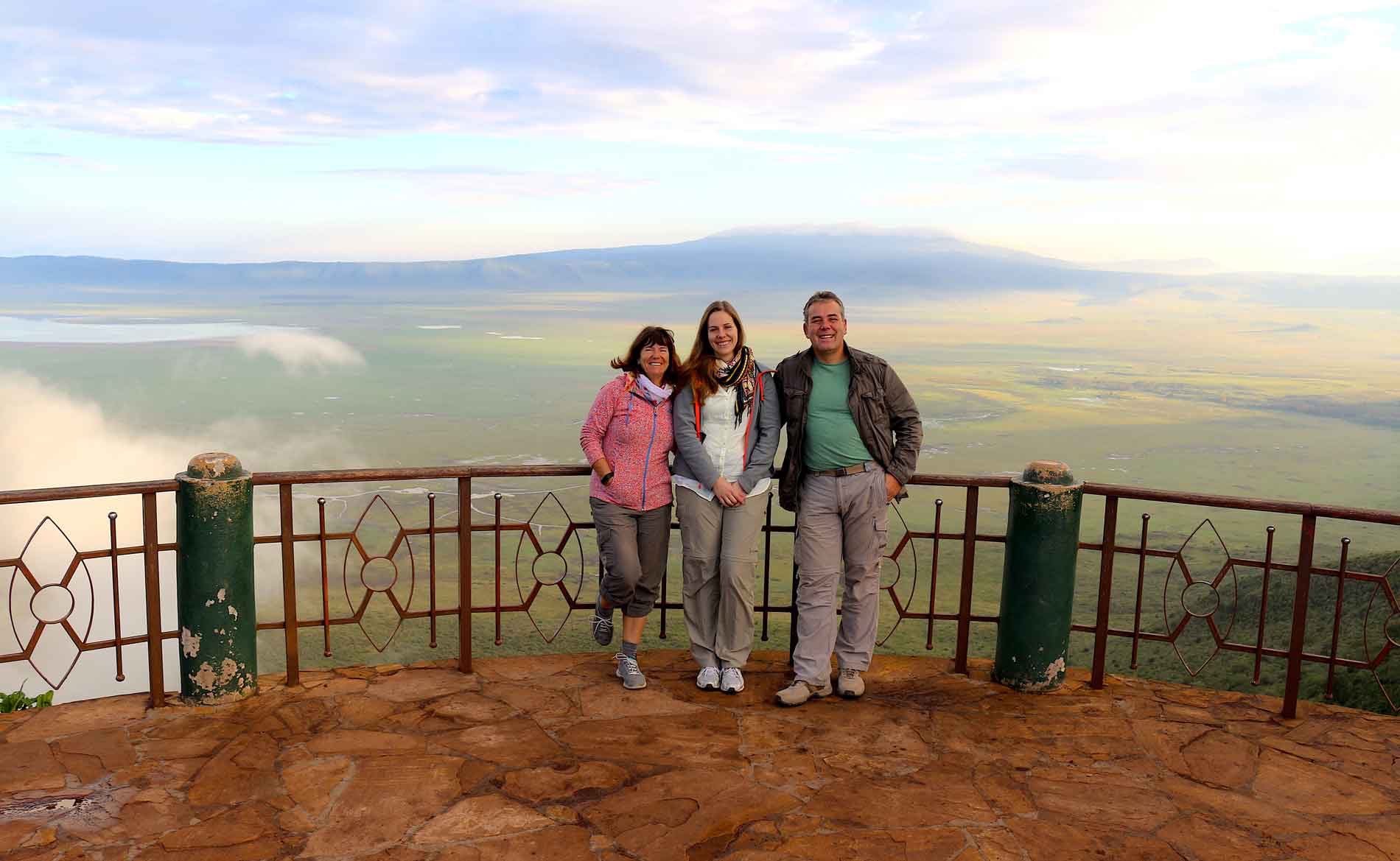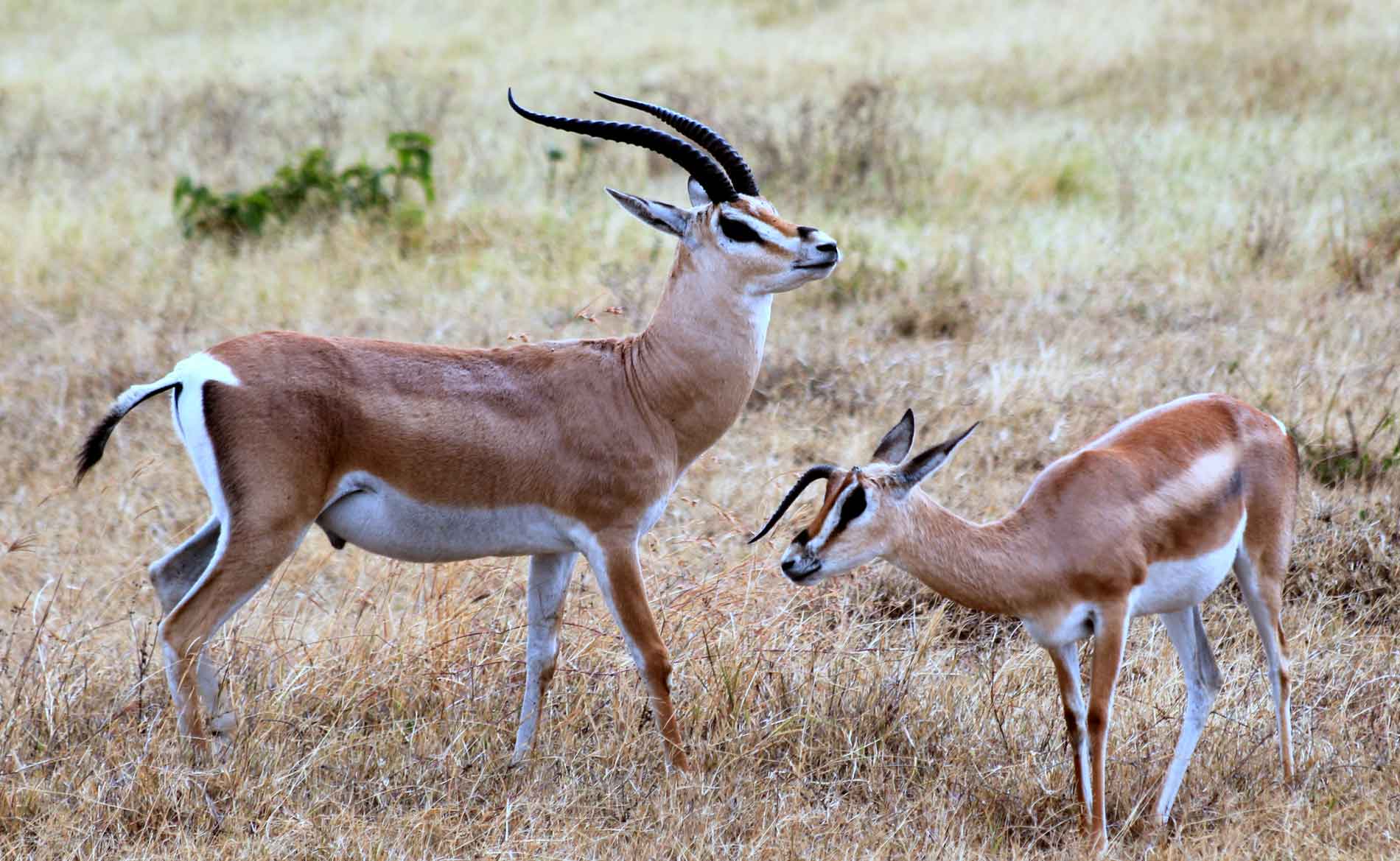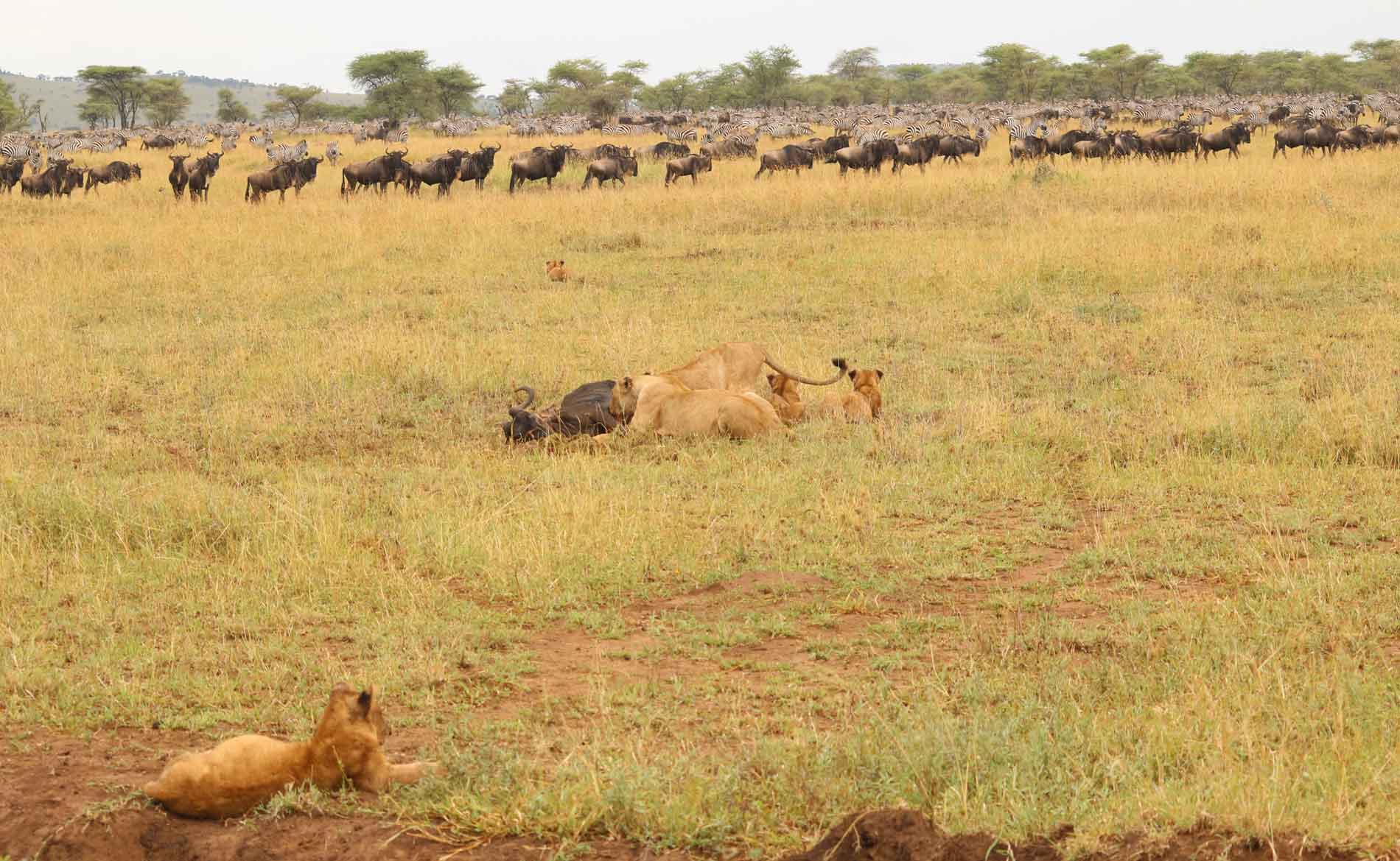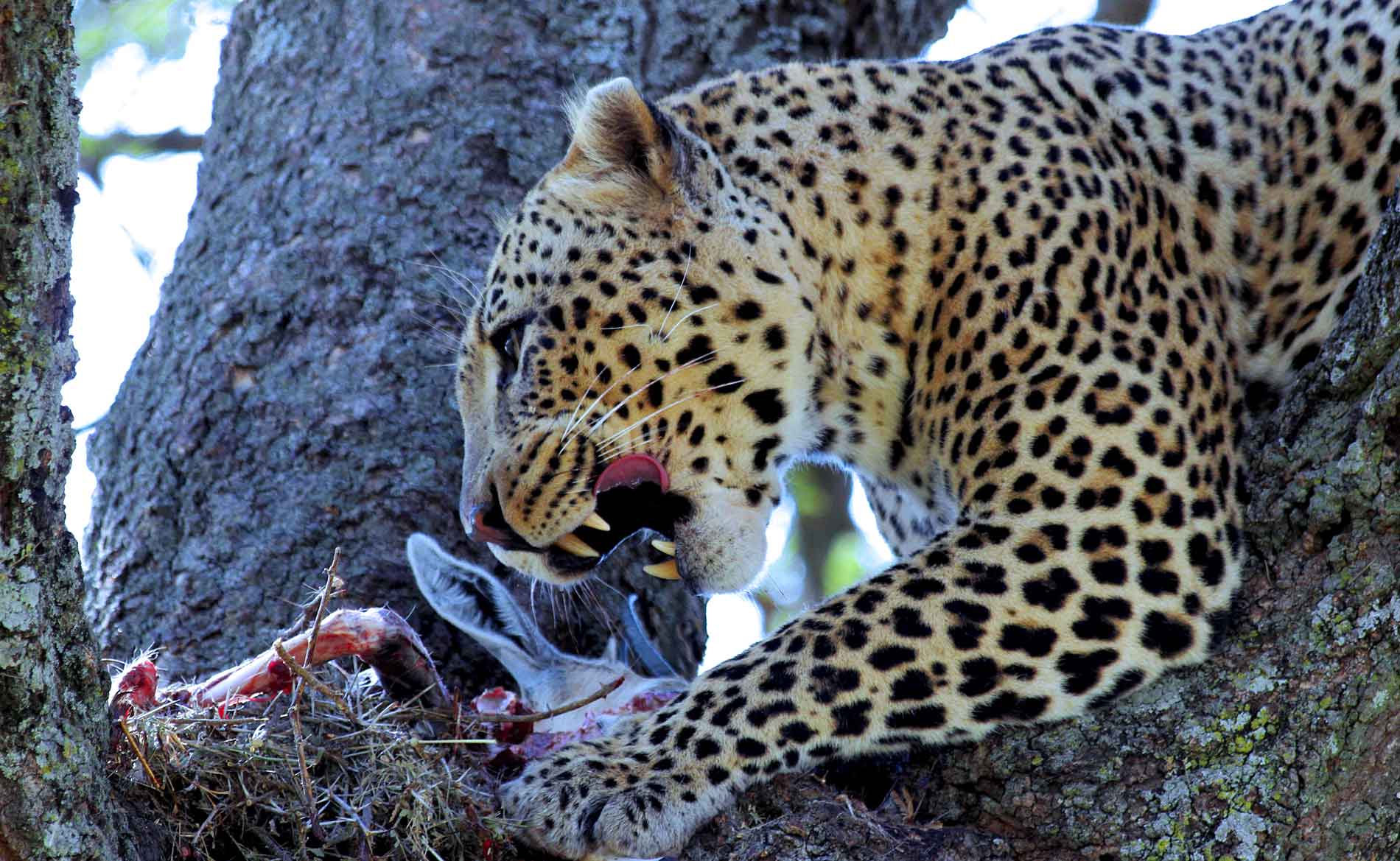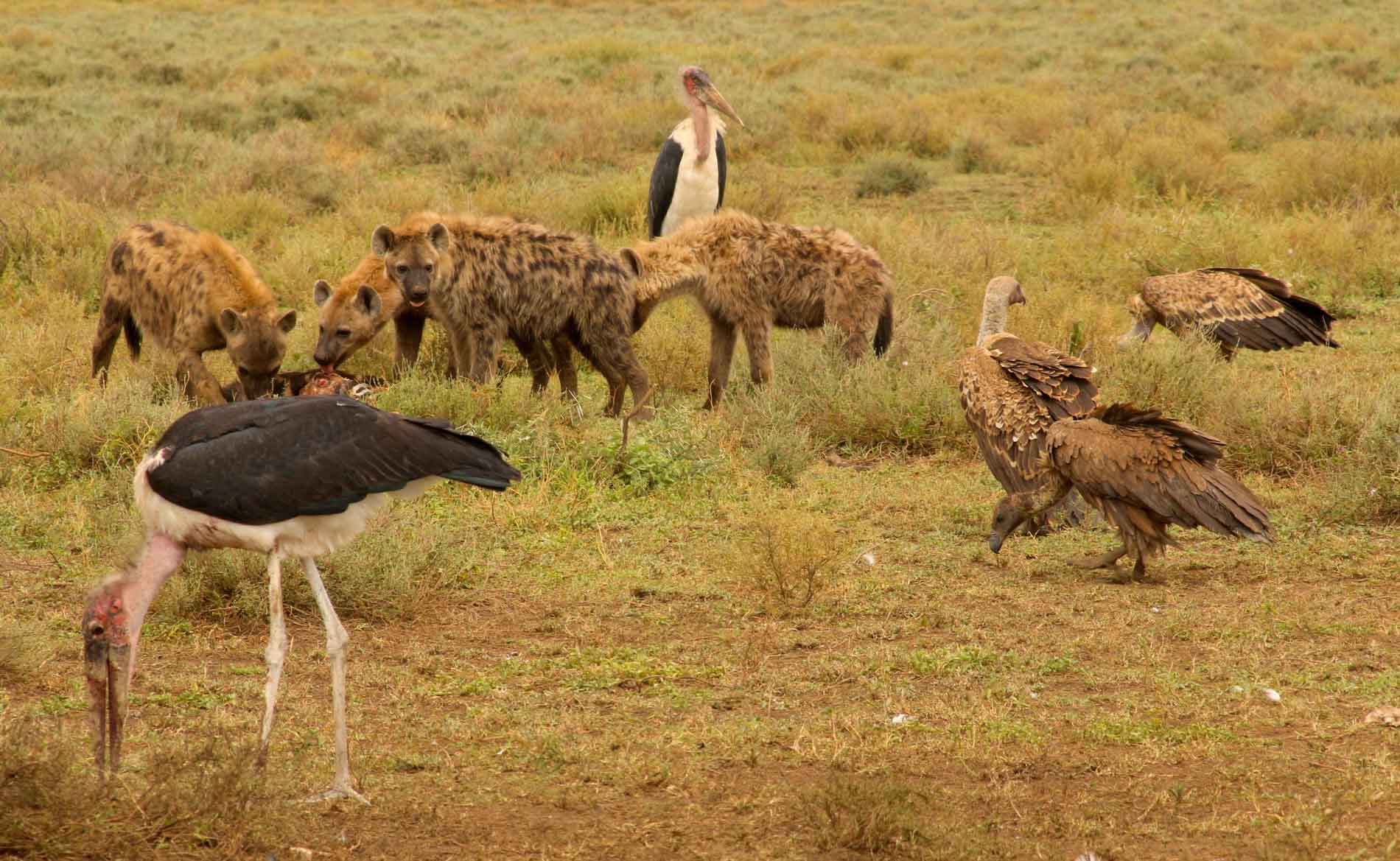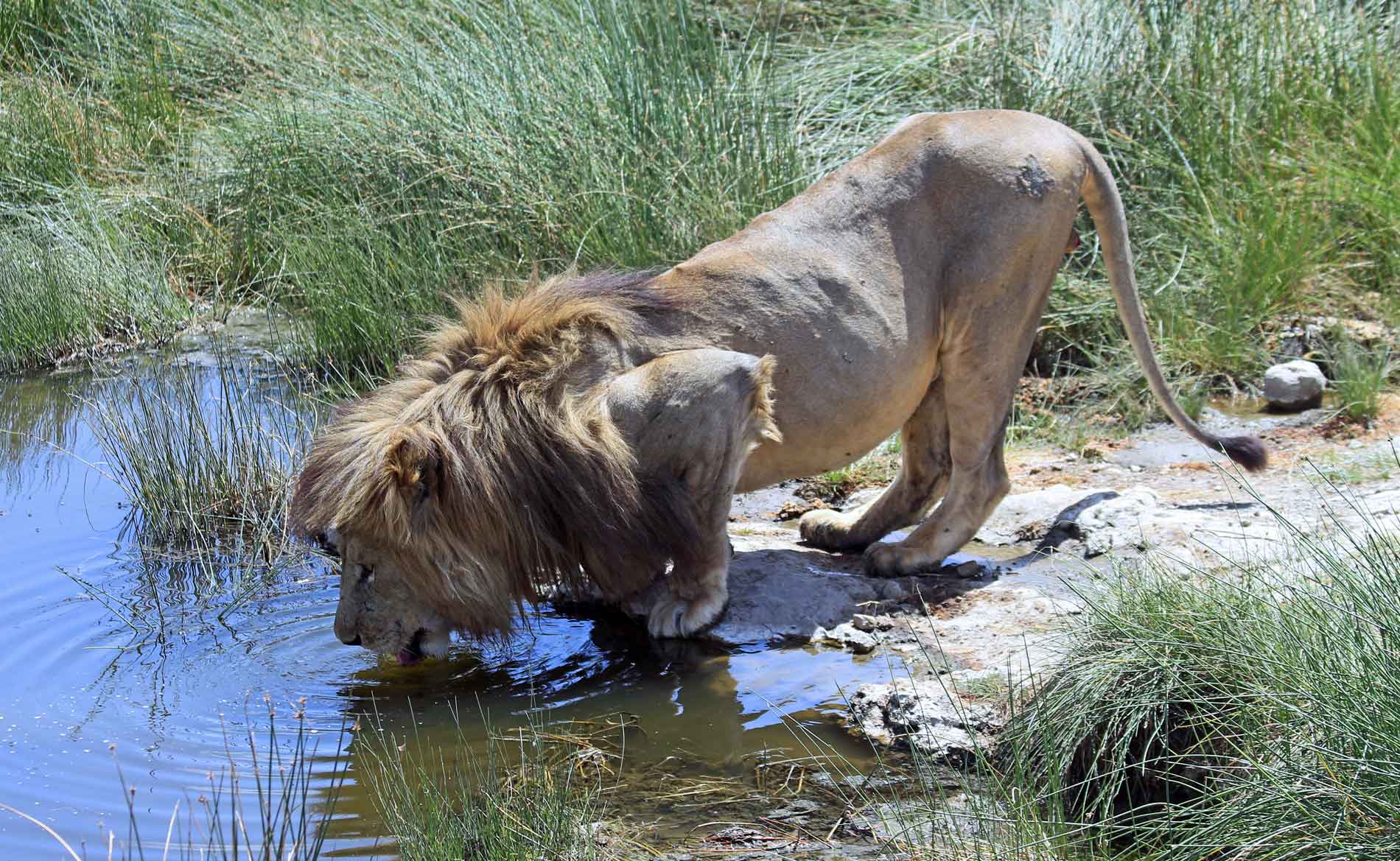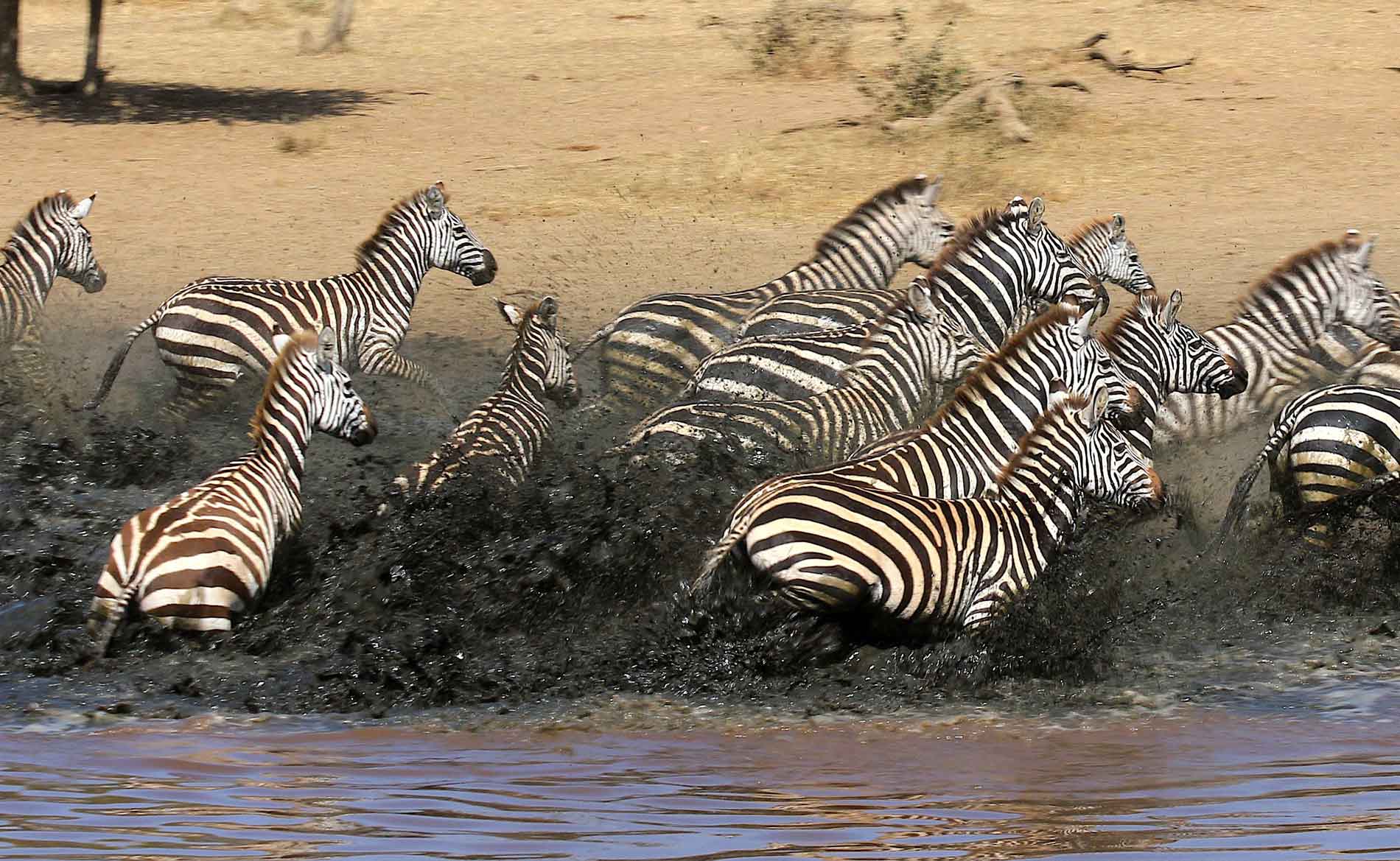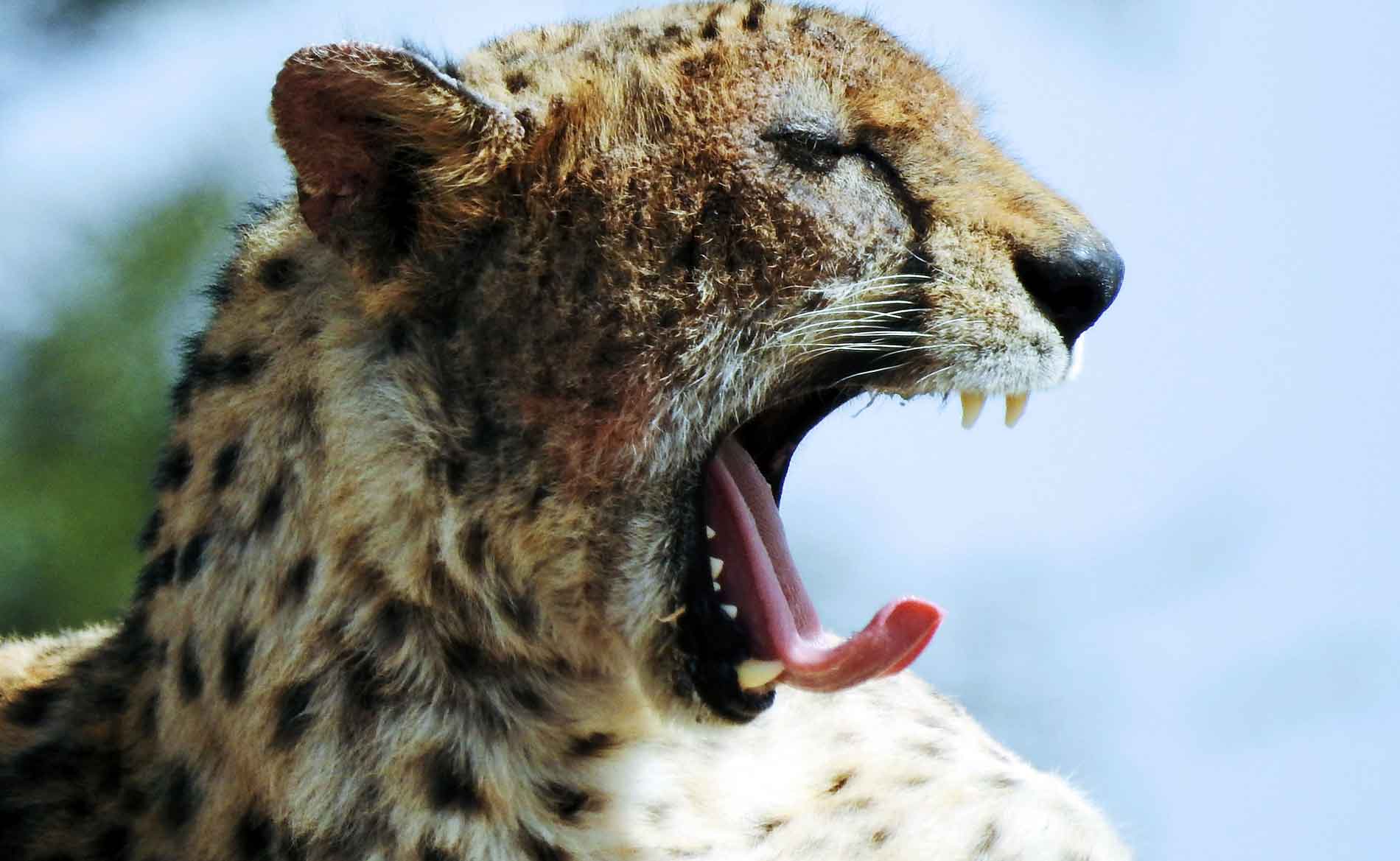NORTHERN TANZANIA TREASURES
The Northern Tanzanian National Parks and Conservation Areas are the most famous due to their astonishing sights and wildlife. They are also frequently visited, because of their comparatively easy accessibility, although sometimes by using bumpy or, more charmingly called African massage roads. All below mentioned highlights can be combined as a roundtrip and reached by car from Arusha or as a one-way route with flight to further destinations from one of the parks.
Arusha
The city of Arusha is located of the bottom of Mount Meru and home to approximately 400.000 Tanzanians. Due to its elevation of about 1.400 meters the climate in Arusha is not as humid and hot as in other regions of the country. The city has some very nice and authentic souvenir spots including the native gemstone Tanzanite and it is the administrative seat of the East African community. If you want to visit a local market, enjoy local food or visit a club with live music, Arusha is worth a visit. Its close location to Kilimanjaro International airport and most of Northern Tanzania’s National Parks make Arusha the best starting point in the Northern Safari Circuit.
Arusha National Park
Arusha National Park is one of the smaller parks, having almost the size of Washington D.C. It is therefore one of the parks which is not as crowded and nevertheless it is not to be underestimated. Arusha National Park is situated only 30 km away from the city of Arusha, where the park also has its name from. It is home to Mount Meru which is the second highest mountain in Tanzania at a height of 4.566 meters. While you can spot Mount Meru in one direction, Kilimanjaro can be visible on clear days in the other direction. Together with Momella Lakes and the Ngurdoto Crater, Arusha National Park thus offers a unique scenery. Unlike most other parks it is possible to do walking safaris in company of a park ranger, which will let you experience wildlife in a different way. The main animals of the park are giraffes, buffaloes, warthogs, monkeys, zebras, bushbucks and other antelopes while the landscape with open land, forests and waterfalls is very diversified.
Kilimanjaro National Park
Of course the name is derived from Kilimanjaro mountain. Also known as “roof of Africa” it is the highest mountain in all Africa with Uhuru Peak at 5.895 meters above sea level. The park is located approximately 150 km or about two and a half hours away from Arusha, close to the town Moshi. If you want to attempt to climb Kilimanjaro using one of the five routes, your trip will lead you through the National Park and different stages of vegetation. Or if you just want to get a taste for it, you can do a day hike, using the first stage of Marangu route. Even for the less adventurous among you, there is another possibility. Based on the slogan “If you can’t climb it, drink it.” you can sip a cold beer and with a little luck get a good view of the mountain.
Tarangire National Park
Tarangire National Park is famous for its numerous baobab trees and big elephant herds. But of course it is also home to many other animals, such as waterbucks, impalas, dik diks, elands, oryx and more besides predators. Also, a large number of termite mounds as well as a big variety of different birds can be found in the park. If the northern regions of the park get very dry, part of the wildebeests, zebras and buffaloes will travel south to find water and grasses. The park with a size of slightly more than the country of Luxembourg further offers stunning views of the scenery with picnic places just in the right spot. You will reach Tarangire after 150 km which means about a three hour drive from Arusha.
Lake Manyara National Park
Lake Manyara National Park is located about 120 km away from Arusha which means a drive between two and two and a half hours. It is just a little bigger than Munich, but unlike the home city of the Octoberfest more than 75% of it are covered with water. This also explains why more than 400 species of birds can be found in the park. Beside pelicans, storks, eagles, cranes and spoonbills, the migrant flamingos shape the scenery for most part of the year. On top of giraffes, zebras and buffaloes, large troop of baboons as well as hippos can be spotted. The so-called attraction of the park, tree climbing lions, are more rarely to be found. For us there are so many other decisive factors to visit. You will see for yourself that Lake Manyara, with its very own landscape, hot springs, location at the rift wall and picnic places with beautiful views of the lake make it definitely worth a visit.
Lake Natron
This special natural phenomenon is something for the ones who like to be more active and prefer the less crowded places. The lake is situated about a four to five hour drive away from Arusha and close to the volcano Ol Donyo L’Engai, which is also the holy mountain of the Maasai tribe. The lava of the volcano mainly consists of sodium, which is being dissolved in the water resulting in a pH of up to 12. That are ideal conditions for the reproduction of a certain bacteria which uses a red pigment for photosynthesis and gives the lake its distinctive color in some places. Those bacteria on the other hand are one of the main nutrition for lesser flamingoes. Up to 2,5 million of them can be found at Lake Natron especially from July to September, with the lake being their only regular breeding area. Besides a guided walk to the lake, you can climb to the Engaresero waterfalls and refresh yourself on the way or spend more time and climb the volcanic mountain Ol Donyo L’Engai.
Ngorongoro Conservation Area
Ngorongoro Conservation Area together with the eponymous Crater or caldera (collapsed volcano) lying in the middle of it, was designated UNESCO World Heritage Site 1979. Ngorongoro being a Conservation Area as opposed to a National Park is not only a place for protection of wildlife, but also a place for people in coexistence with wildlife. You will find mainly Maasai with their cattle moving around the area looking for the best conditions for their families and animals. Besides the Crater drive there are numerous hikes offered throughout the Conservation Area with spectacular views down into the Crater. While the Conservation Area has a size of about 8.300 square kilometers, the Crater makes only about 3,2% of it, which corresponds to an area similar to the islands of Maldives. Yet the Crater, with its good conditions of water and therefore food, has the highest rate of predators in all over Africa. On top of that, it is home to some of the few black rhinos that still exist in Tanzania. This makes the area one of the top locations to visit which will be reached after about a three hour drive from Arusha.
Serengeti National Park
Serengeti is derived from the Maasai word “Siringet” which means endless plains. Upon entering the park, you will see very quickly why this name is more than fitting. The scenery is dominated by the seemingly endless plain land, which is only interrupted by a lake, hill, tree or kopje (rock outcrop) here and there. The ecosystem of Serengeti covers an area about as big as Belgium, with slightly less than half of it being Serengeti National Park. Serengeti, which will be reached after a five to six hour drive from Arusha, is not only the oldest National Park in Tanzania and UNESCO World Heritage Site since 1981, it is also the most famous park in Tanzania, if not in Africa. The main reason for this is the yearly migration of up to 2 million wildebeests, 300.000 zebras and 900.000 Thomson gazelles along with other herbivores who are on the move for finding water and food throughout the ecosystem and being followed by their predators such as lions, leopards, cheetahs and spotted hyenas. This spectacular natural event also gained more fame through the work of professor Bernhard Grzimek and his son Michael in the 50’s with the book and movie “Serengeti shall not die”. Depending on the season and rainfall in the current year, you will find the big herds in the west or east, inside or outside of the park, migrating south towards Ndutu and Ngorongoro Conservation Area or north for crossing the Mara river to find fresh grasses in Maasai Mara Game reserve in Kenya.
Lake Victoria
Lake Victoria with a size as big as Ireland is the largest lake in Africa and the second largest in the world. It is considered to be one of the main sources of Nile river. You will reach the shore of the lake after about half an hour drive from the Western Serengeti. The biggest city Mwanza with a population of about 800,000 people can be reached after another two hour drive proceeding South-west. Activities at the lake include bird watching, canoeing, fishing and visit of local (fish) markets.

